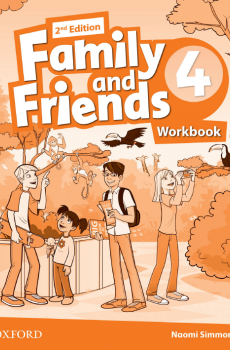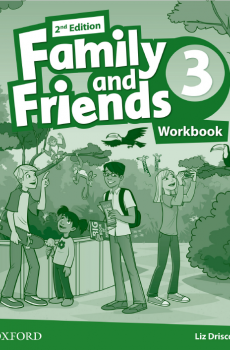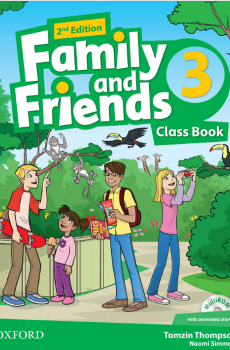Language An Introduction to the Study of Speech
Language An Introduction to the Study of Speech
Đăng nhập để đọc sách và tải về file pdf miễn phí
| Nhà xuất bản | Chưa rõ |
|---|---|
| Nhà xuất bản sách tiếp cận | Public domain |
| Năm xuất bản | 2004 |
| Coppy right | Chưa rõ |
Preface
This little book aims to give a certain perspective on the subject of language rather than to assemble facts about it. It has little to say of the ultimate psychological basis of speech and gives only enough of the actual descriptive or historical facts of particular languages to illustrate principles. Its main purpose is to show what I conceive language to be, what is its variability in place and time, and what are its relations to other fundamental human interests—the problem of thought, the nature of the historical process, race, culture, art.
The perspective thus gained will be useful, I hope, both to linguistic students and to the outside public that is half inclined to dismiss linguistic notions as the private pedantries of essentially idle minds. Knowledge of the wider relations of their science is essential to professional students of language if they are to be saved from a sterile and purely technical attitude. Among contemporary writers of influence on liberal thought Croce is one of the very few who have gained an understanding of the fundamental significance of language. He has pointed out its close relation to the problem of art. I am deeply indebted to him for this insight. Quite aside from their intrinsic interest, linguistic forms and historical processes have the greatest possible diagnostic value for the understanding of some of the more difficult and elusive problems in the psychology of thought and in the strange, cumulative drift in the life of the human spirit that we call history or progress or evolution. This value depends chiefly on the unconscious and unrationalized nature of linguistic structure.
I have avoided most of the technical terms and all of the technical symbols of the linguistic academy. There is not a single diacritical mark in the book. Where possible, the discussion is based on English material. It was necessary, however, for the scheme of the book, which includes a consideration of the protean forms in which human thought has found expression, to quote some exotic instances. For these no apology seems necessary. Owing to limitations of space I have had to leave out many ideas or principles that I should have liked to touch upon. Other points have had to be barely hinted at in a sentence or flying phrase. Nevertheless, I trust that enough has here been brought together to serve as a stimulus for the more fundamental study of a neglected field.
I desire to express my cordial appreciation of the friendly advice and helpful suggestions of a number of friends who have read the work in manuscript, notably Profs. A. L. Kroeber and R. H. Lowie of the University of California, Prof. W. D. Wallis of Reed College, and Prof. J. Zeitlin of the University of Illinois.
Edward Sapir.
Ottawa, Ont., April 8, 1921.
Contents
Preface
chapter Introductory: Language Defined Language a cultural, not a biologically inherited, function. Futility of interjectional and sound-imitative theories of the origin of speech. Definition of language. The psycho-physical basis of speech. Concepts and language. Is thought possible without language? Abbreviations and transfers of the speech process. The universality of language. The Elements of Speech Sounds not properly elements of speech. Words and significant parts of words (radical elements, grammatical elements). Types of words. The word a formal, not a functional unit. The word has a real psychological existence. The sentence. The cognitive, volitional, and emotional aspects of speech. Feeling-tones of words. The Sounds of Language The vast number of possible sounds. The articulating organs and their share in the production of speech sounds: lungs, glottal cords, nose, mouth and its parts. Vowel articulations. How and where consonants are articulated. The phonetic habits of a language. The “values” of sounds. Phonetic patterns. Form in Language: Grammatical Processes Formal processes as distinct from grammatical functions. Intercrossing of the two points of view. Six main types of grammatical process. Word sequence as a method. Compounding of radical elements. Affixing: prefixes and suffixes; infixes. Internal vocalic change; consonantal change. Reduplication. Functional variations of stress; of pitch. Form in Language: Grammatical Concepts Analysis of a typical English sentence. Types of concepts illustrated by it. Inconsistent expression of analogous concepts. How the same sentence may be expressed in other languages with striking differences in the selection and grouping of concepts. Essential and non-essential concepts. The mixing of essential relational concepts with secondary ones of more concrete order. Form for form’s sake. Classification of linguistic concepts: basic or concrete, derivational, concrete relational, pure relational. Tendency for these types of concepts to flow into each other. Categories expressed in various grammatical systems. Order and stress as relating principles in the sentence. Concord. Parts of speech: no absolute classification possible; noun and verb. Types of Linguistic Structure The possibility of classifying languages. Difficulties. Classification into form-languages and formless languages not valid. Classification according to formal processes used not practicable. Classification according to degree of synthesis. “Inflective” and “agglutinative.” Fusion and symbolism as linguistic techniques. Agglutination. “Inflective” a confused term. Threefold classification suggested: what types of concepts are expressed? what is the prevailing technique? what is the degree of synthesis? Four fundamental conceptual types. Examples tabulated. Historical test of the validity of the suggested conceptual classification. Language as a Historical Product: Drift Variability of language. Individual and dialectic variations. Time variation or “drift.” How dialects arise. Linguistic stocks. Direction or “slope” of linguistic drift. Tendencies illustrated in an English sentence. Hesitations of usage as symptomatic of the direction of drift. Leveling tendencies in English. Weakening of case elements. Tendency to fixed position in the sentence. Drift toward the invariable word. Language as a Historical Product: Phonetic Law Parallels in drift in related languages. Phonetic law as illustrated in the history of certain English and German vowels and consonants. Regularity of phonetic law. Shifting of sounds without destruction of phonetic pattern. Difficulty of explaining the nature of phonetic drifts. Vowel mutation in English and German. Morphological influence on phonetic change. Analogical levelings to offset irregularities produced by phonetic laws. New morphological features due to phonetic change. How Languages Influence Each Other Linguistic influences due to cultural contact. Borrowing of words. Resistances to borrowing. Phonetic modification of borrowed words. Phonetic interinfluencings of neighboring languages. Morphological borrowings. Morphological resemblances as vestiges of genetic relationship. Language, Race, and Culture Naïve tendency to consider linguistic, racial, and cultural groupings as congruent. Race and language need not correspond. Cultural and linguistic boundaries not identical. Coincidences between linguistic cleavages and those of language and culture due to historical, not intrinsic psychological, causes. Language does not in any deep sense “reflect” culture. Language and Literature Language as the material or medium of literature. Literature may move on the generalized linguistic plane or may be inseparable from specific linguistic conditions. Language as a collective art. Necessary esthetic advantages or limitations in any language. Style as conditioned by inherent features of the language. Prosody as conditioned by the phonetic dynamics of a language.












